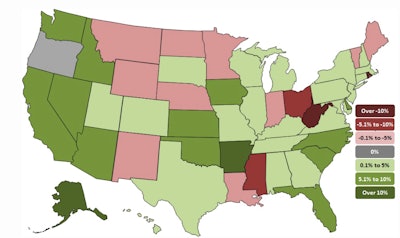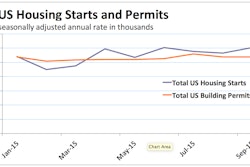
Fourteen states shed construction jobs during the past 12 months, while construction employment was unchanged in Oregon. West Virginia lost the highest percent of construction jobs followed by Rhode Island, Ohio and Mississippi. California added the most new construction jobs between September 2014 and September 2015 followed by Florida, Washington and Pennsylvania.
Construction employment expanded in 35 states and the District of Columbia between September 2014 and September 2015 yet only 23 states added jobs between August and September, according to an Associated General Contractors of America (AGC) analysis of Labor Department data. Association officials said the fact as many states lost construction jobs as added them last month was likely due to a combination of labor shortages and uncertainty about a host of federal investment programs.



















